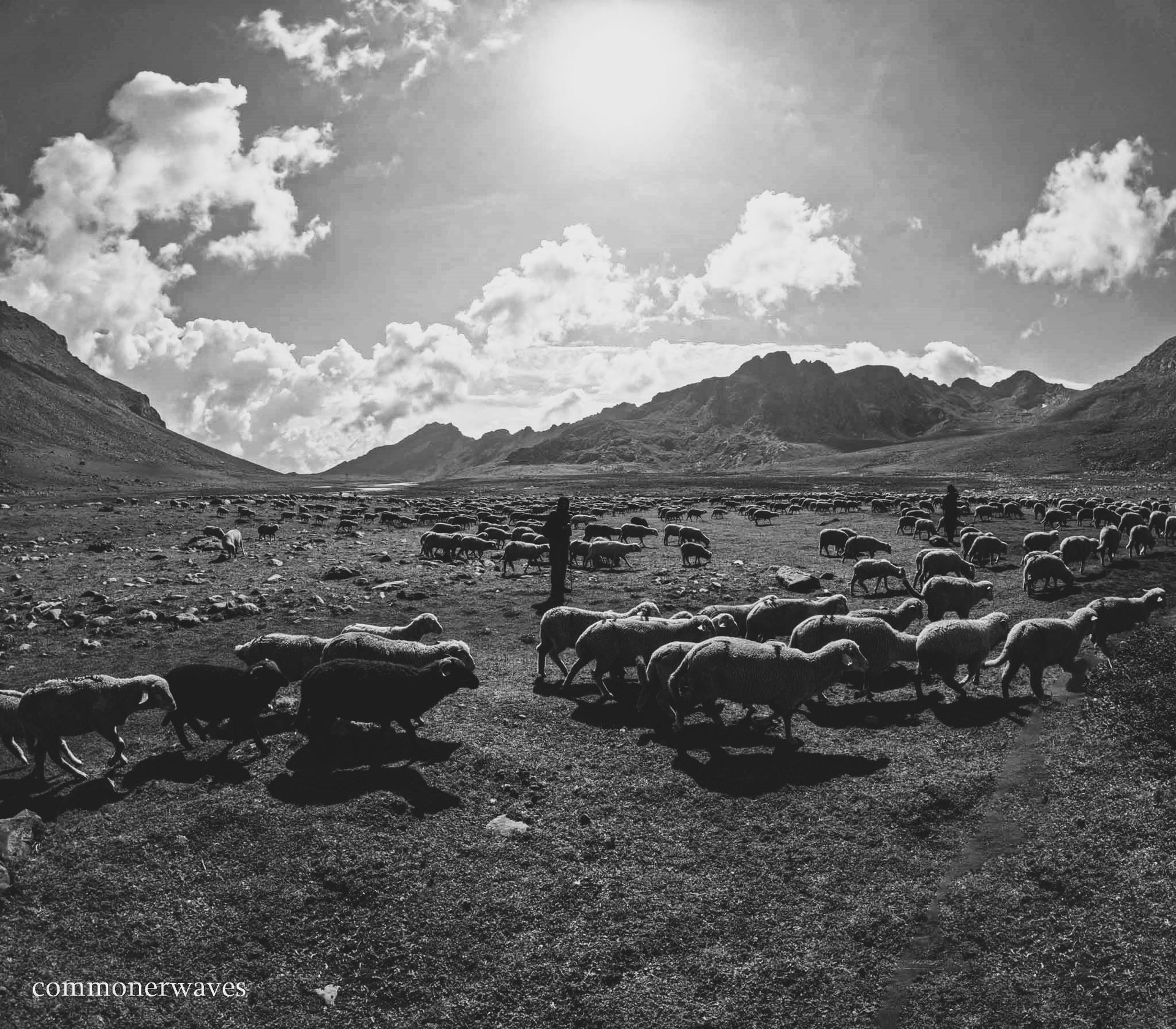
Listen to the story from the conversation with Ahmed
Shepard who walks from Jammu to Kashmir with 1250 sheep for 25 days !
original audio
edited audio
Anchita Kaul & Aritakula Shree Tej




Ahmed, a man in his mid-40s, embarks on an arduous journey from Jammu to Kashmir, accompanied by his impressive herd of 1250 sheep. This demanding trek typically spans a duration of 20 to 25 days, during which Ahmed meticulously constructs temporary shelters for himself, his assistant, and their woolly companions. Shepherds like Ahmed commit half of their year to Jammu, while the other six months are dedicated to tending to and grazing their flock. This nomadic lifestyle serves as their primary means of sustenance and income, providing for their families.
In the past, Ahmed would traverse these rugged terrains either alone or in the company of male family members, as the children pursue their education, and his wife tends to their homefront responsibilities. Ahmed currently collaborates with an assistant, whom he remunerates at a rate of 40,000 rupees per month. Together, they possess the expertise needed to manage the sheep, employing their knowledge of herding techniques, sheep calls, and shelter construction.
Notably, Ahmed does not carry a mobile phone during his journey, owing to the scarce signal and network connectivity in the lofty reaches at 8000 feet. Instead, they rely on the assistant's collection of downloaded songs to keep their spirits up as they walk.
Their sustenance throughout the trek primarily relies on the supplies they carry, including grains. They source water from nearby streams and utilize firewood to prepare their meals. In case of unforeseen emergencies, such as a dire need for funds, Ahmed resorts to selling one of his sheep to anyone willing to make a purchase.
A pivotal aspect of their journey is the authorization granted by the government, which permits them to navigate the mountainous terrain. The government also lends a helping hand by providing trucks for the transportation of the sheep, especially during the transition from Jammu to Kashmir. These vehicles are double-decked, accommodating 600 sheep on the upper level and the rest in the lower compartment. Additionally, other shepherds, akin to Ahmed, register their names with the government and specify their flock size, as the government endeavors to allocate suitable transportation options.
One distinctive feature of Ahmed's sheep is that each of them is insured through government policies. This insurance extends various benefits, including complimentary medical care and routine disease assessments. In the unfortunate event of a sheep's demise, Ahmed promptly summons a government-affiliated veterinarian to conduct a comprehensive disease analysis, thereby enhancing the safety of his flock.
In stark contrast, fellow shepherds who lack insurance for their sheep are left with no recourse but to abandon their deceased animals. Ahmed underscores the invaluable role these facilities play in his profession. Identifying sheep covered by insurance is straightforward due to the distinctive marking (mudra) on their ears.
The government plays a pivotal role in facilitating the distribution of sheep. It accommodates the first 500 sheep, newcomers to the business, and those seeking to augment their flock. The government then proceeds to vend these sheep to shepherds. In return for services like insurance, transportation, and medical care, shepherds contribute one "Nag" or 50 sheep to the government each year. These sheep are subsequently retailed to other shepherds by the government, thus perpetuating a self-sustaining, circular system.
Circular system of business & 1 "Nag".





